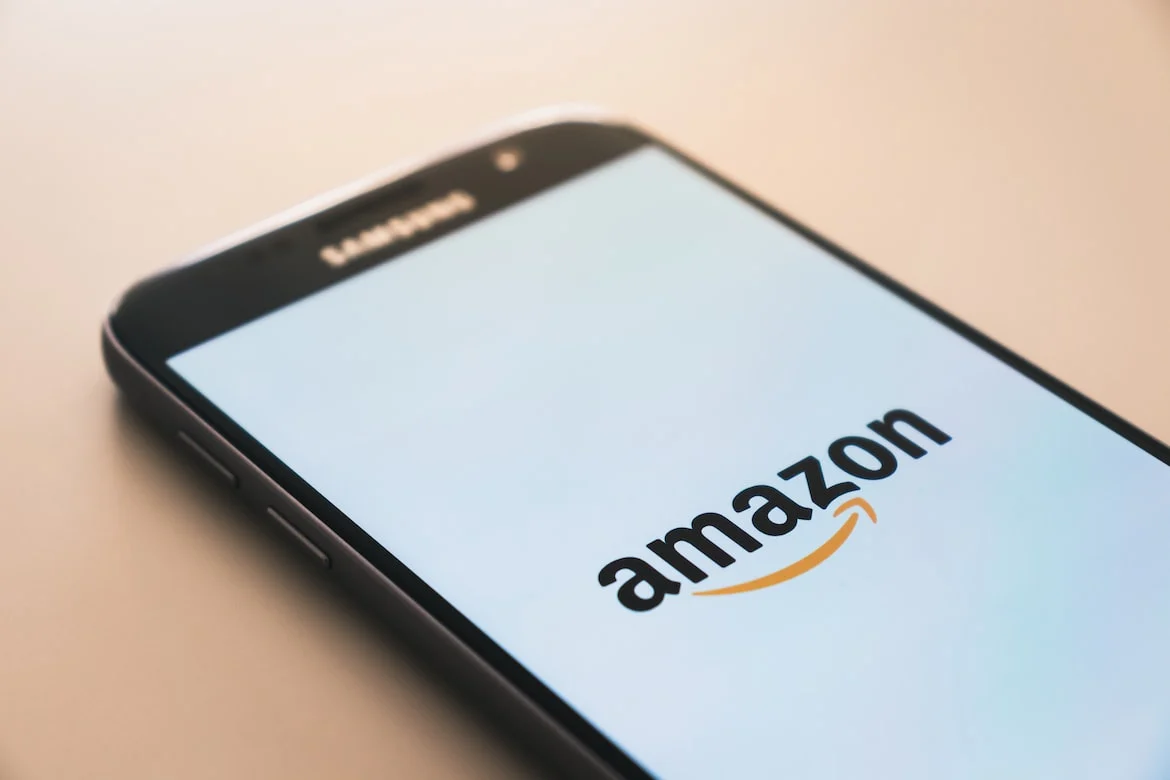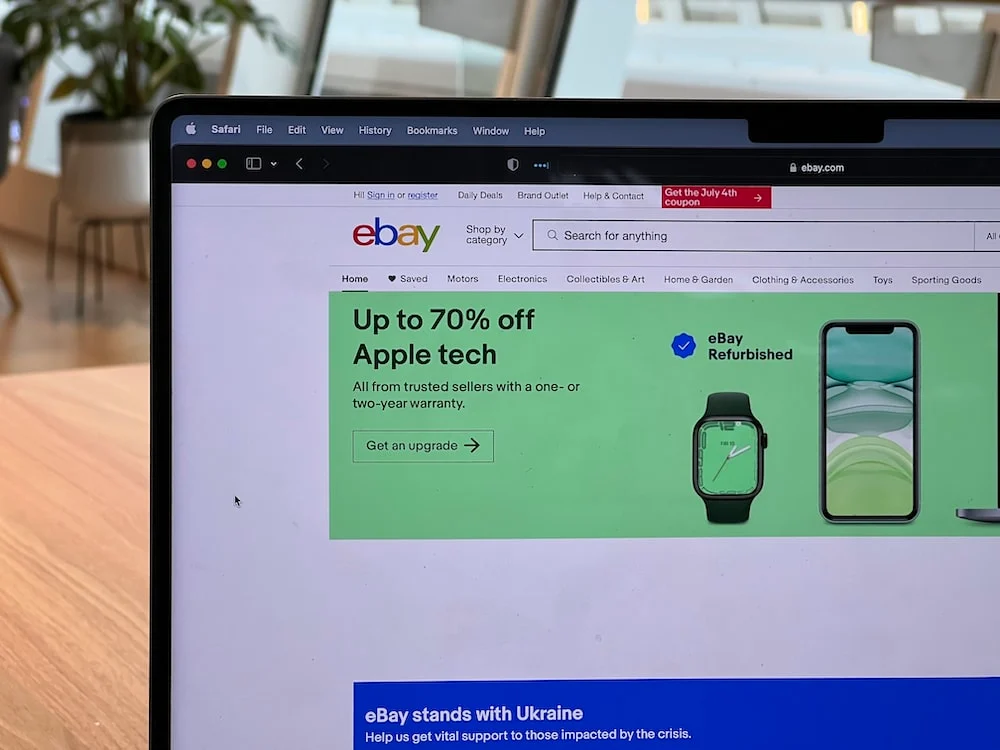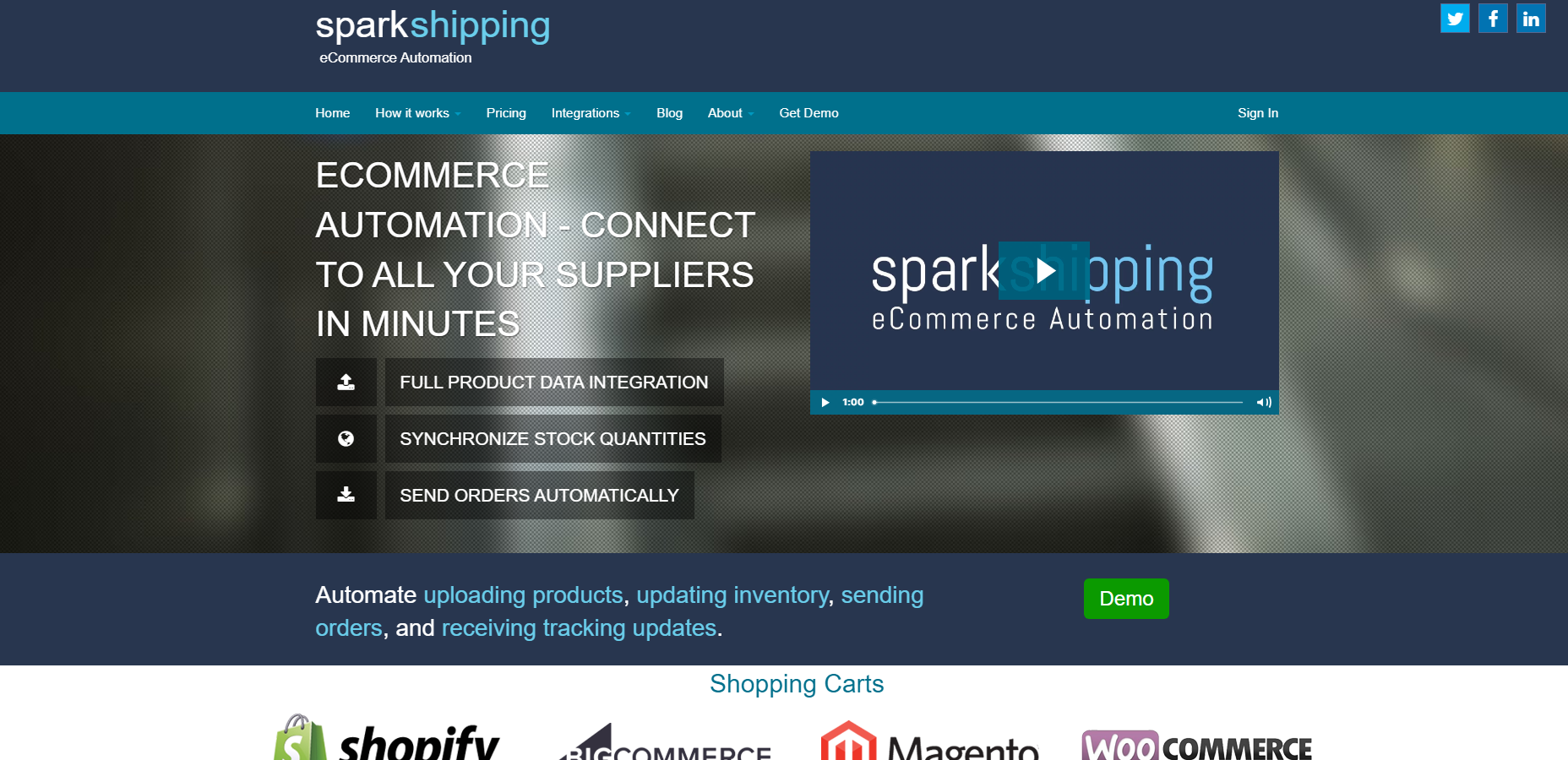Dropshipping Tips: How to Start & Grow a Successful Dropship Business!

Have you always dreamed of running an online business?
eCommerce is an incredibly profitable niche—the global eCommerce market is expected to total $6.3 trillion in 2024.
The good news is that you don't need hundreds of thousands of dollars to create your online store.
The dropshipping business model allows you to set up an eCommerce business without the risks of buying and storing tons of inventory.
As a dropshipping store owner, you only need reliable suppliers and a keen eye for marketing strategies that attract customers.
However, dropshipping isn't a get-rich-quick scheme.
The dropshipping model is also not a low-risk business venture—only a percentage of dropshipping businesses succeed in the long term.
This guide will show you how to build a dropshipping business from the ground up. Plus, we'll share eight expert-level dropshipping tips to help you build a successful dropshipping business.
Five Steps to Building a Successful Dropshipping Store

As a dropshipper, you pay the wholesale price for products from a supplier.
The good news is that you don't have to pay to manufacture or store these goods, but you're still on the hook for the wholesale price plus marketing expenses. The retail price needs to cover all your costs, but that's easier said than done.
Many dropship start-ups fail to set up their dropshipping stores effectively, which could hurt their profit margins.
Follow these five dropshipping tips to become a more successful dropshipper by setting up an effective online store from the start.
1. Understand your target market
Source: FreePik
As a drop shipper, you must understand your potential customers' wants and needs.
The dropshipping business model hinges on your marketing abilities, so you need a solid understanding of your target market's online shopping habits.
One of the biggest mistakes new dropshippers make is casting their net too wide. Targeting a general audience might sound like the key to ensuring your business grows over time, but it's actually counterproductive.
Think about it: when your dropshipping store caters to everyone, it's impossible to be specific about anything.
Online shoppers expect relevant, personalized product descriptions and quality products that solve their biggest problems.
You can only address these needs by focusing on a single target audience. To do that, start by creating a single customer profile.
The goal is to find an unaddressed market that needs new, innovative solutions to their problems.
Look for an audience with these qualities to find the best audience for your dropshipping business.
Pain point
Every online shopper is buying something to solve a want or a need.
As a dropshipping business, it's your job to solve their needs with reliable products.
Look for people who have problems that your products solve.
For example, an aspiring home chef might buy specialty spatulas via an eCommerce platform because they can't find good options in-store.
|
💡 Dropshipping tip: Look for unaddressed needs in the market. For example, if your competitors charge expensive fees for product returns, offer hassle-free returns and lower prices. You'll stand out in a crowded niche by solving these common issues that can damage the customer experience. |
Purchasing power
Before marketing to your target audience, consider whether they can afford your products.
If your audience doesn't have purchasing power, it doesn't matter how well you solve their needs.
For example, sports products tailored toward broke college students would need to be incredibly affordable to make sense for this audience.
Either change your target audience or follow careful pricing strategies to boost your margins.
Ease of targeting
How easy is it to target this market?
If you want to target a specific customer, it’s helpful if they possess distinct characteristics, preferences, or behaviors.
This is why choosing a niche for your dropshipping venture is so valuable. Instead of targeting everyone, target people with niche interests or hobbies.
For example, drop shipping products for fly fishers in Canada is a highly specific and targetable way to find your ideal buyers.
Room for growth
It's great if you find a profitable niche in drop shipping, but is there consistent demand for your products? Is there growth potential in your chosen niche?
It's okay to widen your scope after establishing an online store, but plan for that from the start. Look for markets with the potential for recurring revenue projected to grow over time.
Now that you better understand the market, it's time to build a customer profile or persona.
This is an internal marketing tool that store owners use to put themselves in their shoppers' shoes. Go as deep as you can here.
For example, if you're selling sports drinks online, your first thought might be that you should target athletes. But that's not very specific. Instead, choose a niche with a specific type of athlete, such as runners, football players, or tennis players.
Drill down even more from there.
If you want to sell sports drinks to runners, create a very specific vision of your ideal runner. Answer questions like:
❓Are they sprinters or marathon runners?
❓What problem does my product solve for this runner?
❓How old is this runner?
❓Do they run for fun?
❓What's their gender identity?
❓Do they have kids?
❓What’s their average income?
This might sound like an extra step, but a customer persona helps you:
- Offer good customer support tailored to your shoppers' expectations
- Boost your business's reputation in your chosen niche
- Tailor your marketing efforts, like influencer marketing or content on search engines, to your ideal shopper
You're free to build your own customer persona, but HubSpot's "Make My Persona" tool can create a persona for you in just a few clicks.
3. Start selling on one channel

Selling on one eCommerce platform at a time is one of the best dropshipping tips for beginners.
You might feel tempted to promote your dropship business on every platform possible, but there's a big difference between reaching everyone and reaching shoppers who will buy your products.
Opening a dropshipping store is exciting, but there's a steep learning curve.
Starting with a single channel will help you understand shopper behavior and provide more data so you can refine the dropshipping process over time.
How to choose an eCommerce platform

You should only choose one channel for starters, so choose wisely. For beginners, we recommend opening your dropshipping store via:
- Your own eCommerce website
- Online marketplaces, like Amazon or eBay
- Local marketplaces, like Craigslist
- Social media platforms with integrated eCommerce, like Instagram or Facebook
- Niche-specific platforms
Check your customer persona if you need help deciding which channel to choose. This will tell you everything you need to know about your shoppers' preferred buying process, including where they prefer to shop. Go where your customers are to set your online store up for success.
4. Choose unique products and categories

Choosing a niche audience will automatically make your business more resistant to competition.
Of course, it's unlikely that you'll be the only store in a single niche, especially when you buy products from dropshipping suppliers that sell to multiple businesses.
Even so, try to use unique products (and unique product categories) to stand out. In dropshipping, this involves identifying products common in one niche that can solve a prevalent issue in another, unrelated niche.
For example, 3M, the company that invented Post-Its, created adhesive for another product before realizing sticky notes could solve many problems. Today, this product is a staple in office supplies.
You might not invent the next Post-It, but a little creativity goes a long way. Conduct market research to identify emerging industry trends and pinpoint untapped product categories that align with your shoppers' needs.
5. Expand your business after you have experience
At this point, you've followed our dropshipping tips and built a solid dropshipping business that solves a need for a specific niche. As your business expands, you might outgrow your current audience, products, or eCommerce platform and need to branch out.
The next move is to gradually expand your business with a tiny change at a time. But don't add new audiences, selling channels, or products simultaneously. This is a common trap store owners fall into, and it could undo months of hard work—so tread lightly.
If you want to increase your product line, add one product, gather sales data, and see if it's increasing your profit margins. This approach helps you avoid taking on too much at once and allows for healthy business growth, so take your time and let the data tell you what's working.
Eight Tips to Grow a Successful Dropshipping Business

Although dropshipping is not as complicated as managing your own factory or a warehouse, it's far from easy.
Instead of learning from the school of hard knocks, follow dropshipping tips from people who have come before you. Below, we list eight dropshipping tips to make your established online store a success story.
1. Master marketing
Dropshipping is a relatively hands-off business model if you pick the right supplier.
However, it's your responsibility to generate interest from people shopping online, which means you need to become a marketing whiz.
Consider investing in marketing strategies like:
- Search engine optimization (SEO)
- Paid campaigns through Google Shopping Ads, Facebook Ads, or Amazon Ads
- Organic social media posts
Online marketing is an entire discipline on its own, but refining your marketing skills is one of the best dropshipping tips we can offer.
If you want to build a successful dropshipping business, take free online classes like Google’s Fundamentals of Digital Marketing and work through our comprehensive guides on SEO, Google Shopping Ads, and Influencer Marketing.
2. Order product samples
No matter which dropshipping supplier you choose, you still need to order samples of every product before you offer it to online shoppers.
This way, you can see the products in person and ensure they adhere to your strict quality standards. It can also help you write more helpful product pages.
Some suppliers provide samples for free, while others may charge a small shipping fee.
Contact your suppliers to see if they offer samples, how much they cost, and what the shipping process looks like.
3. Manage your inventory levels
Managing inventory from different suppliers is crucial if you're running a dropshipping business. Failing to do this might result in having to notify customers that their orders are out of stock, potentially causing them to shop elsewhere in the future.
🏆 The more suppliers you have, the better
Having a bunch of different suppliers, especially ones that sell similar items, can help ensure that your customers don’t have to wait unnecessarily long for orders. If one supplier runs out of an item, another might have it. Plus, depending on just one supplier can be risky.
If they stop working with you or close down, your business could be in trouble. Even if two suppliers don't carry the exact same items, they'll probably both stock the really popular ones.
🏆 Choose your products wisely
Try to sell things that are consistently available from all of your suppliers. This way, you'll always have a backup plan for sourcing your products, minimizing the risk of running into inventory issues.
🏆 Use similar products to your advantage
If two suppliers offer nearly identical products, you can use this to your advantage. Craft product descriptions that fit both options. That way, you can send the order to either supplier without having to change anything.
🏆 Always make sure that items are actually available
Just because a supplier lists an item doesn't guarantee they’ll always have it available. Talk to your suppliers about how often they have stock of the products you want to sell. You'll want to avoid products that are frequently out of stock.
🏆 Appease your customers when items are out of stock
Sometimes, you'll still end up with orders you can't fill. In these cases, try offering the customer a better, similar product for free.
They'll probably be happy, and you'll keep a good relationship with them. Even if you don't make money on this particular order, it's better than losing a customer.
|
Stay Ahead of the Game with Spark Shipping Are you tired of the guesswork involved in managing your inventory? It's time to embrace the power of technology! With Spark Shipping, you can keep a close eye on your inventory levels across multiple suppliers in real-time. Say goodbye to out-of-stock surprises and hello to seamless order fulfillment. Ready to streamline your dropshipping business? Try a free demo today! |
4. Fulfill orders intelligently
As we mentioned above, having multiple suppliers means that you can fulfill an order as soon as it comes in. Other benefits include better stock availability, faster delivery through geographical diversity, and reduced dependence on a single source.
However, when you have various suppliers at your disposal, deciding which one to use to fulfill each order can be a bit tricky. Let’s explore some methods to make this process smoother:
➡️ Route orders to a preferred supplier
If you have a go-to supplier who stocks most of your items and offers excellent service, you might want to send all orders to them by default.
This approach is straightforward—you can automate it by adding this supplier's email as a recipient for all new order confirmations.
➡️ Route orders based on availability
For a large product range spread across multiple suppliers, you want to ensure that you always route orders to a supplier who has the specific item in stock.
This can be a lot of work if you’re doing it manually, but tools like Spark Shipping can automate this process, making sure you can always deliver once an order has been placed.
➡️ Route orders based on location
When you have several suppliers who carry most of your products, consider sending the order to the one who has stock that’s nearest to your customer. This method speeds up delivery and can save on shipping costs. It’s a win-win for you and your customers.
➡️ Route orders based on price
While choosing the cheapest supplier sounds ideal, it's not always that straightforward. An automated system that considers drop fees, real-time shipping rates, and supplier pricing is required to optimize the process. Implementing such a system accurately can be challenging, so tread carefully.
|
💡 Top Tip: Dropshipping automation software like Spark Shipping allows you to route orders intelligently. For example, you can set up a rule to always route orders to the cheapest in-stock supplier that’s closest to the delivery address. |
5. Prioritize customer satisfaction
This dropshipping tip might sound like common sense, but you’d be amazed how few store owners optimize the customer experience.
At the end of the day, a product is a product. You’re likely selling the same products as your competitors, but your customer support sets you apart.
Excellent customer service often comes down to the Golden Rule: treat people the way you want to be treated.
Follow these rules of thumb to give shoppers the five-star customer support they expect:
✅ Answer all customer inquiries within 24 hours
✅ Respond to social media comments and DMs as quickly as possible
✅ Create an FAQ page with common customer questions
✅ Offer multiple payment options
✅ Write accurate product descriptions that include helpful images or videos
6. Optimize shipping costs
Shipping fees is yet another area of your dropshipping business that you can easily optimize to boost profit margins.
From FedEx to DHL to ePacket, dropshippers have many options for shipping. In our experience, many dropshippers choose ePacket because it's affordable and fast.
On average, the ePacket shipping fee is under $5 for most products. Customers will receive their products within a week or two, which makes it one of the faster shipping options out there, too.
What about Amazon FBA?
Amazon FBA comes with simple shipping rules and pricing. If you’re selling through this program, familiarize yourself with these rules so you can optimize your products for lower shipping prices.
For example, you might be able to lower your FBA costs by reducing your product or packaging size.
7. Automation is your friend
Scaling a dropshipping business used to involve taking on more work and stress. Thankfully, that isn't the case today. Automation is a big asset to any dropshipping business.
Depending on your solution, you can automate all kinds of dropshipping tasks.
Look for ways to reduce your workload by automating aspects such as marketing tasks, customer service inquiries, or inventory management.
For example, Spark Shipping has full product data integrations that automatically take data from a supplier’s catalog and upload it to your eCommerce store.
If you're working with hundreds of products, this is a serious time-saver.
8. Create custom content
When did you last see an eCommerce site with a blog or a newsletter?
Not all online stores make their own content, but this is yet another dropshipping tip that will differentiate your dropshipping store from all the others.
Custom content boosts your brand reputation, increases your search engine traffic, and boosts sales.
Content ideas for drop shippers
After you've optimized other areas of the customer experience, invest in custom content like:
💡 Influencer marketing on social media
💡 Weekly or monthly email newsletters
💡 User-generated content on your website or Instagram account
Grow a Successful Dropshipping Business

As you create your first dropshipping business, starting small is important. Start by focusing on a single audience and sales channel, then expand from there.
Follow the dropshipping tips in this guide to increase your profit margins, run a better business, and outdo the competition.
Once you start making more sales, you might need a little more help. Before you hire employees to manage the workload, embrace automation.
Spark Shipping is here to simplify your dropshipping journey.
Our solution automates the most tedious parts of dropshipping so you can focus on what you love most: selling.
Trust Spark Shipping to automate:
- Product uploads
- Inventory updates
- Order routing
- Pricing
- Tracking updates
See the difference firsthand: get a Spark Shipping demo now.
Popular Posts
Posts by Topic
- Dropshipping (5)
- Dropshipping Automation (4)
- Dropship Suppliers (3)
- EDI (3)
- Pricing Strategy (3)
- Amazon Seller Central (2)
- Conversion Rate Optimization (2)
- Dropshipping Products (2)
- Order Management (2)
- Vendor Product Catalog (2)
- Dean Soto (1)
- Feature Announcement (1)
- Online Empire Academy (1)
- Product Optimization (1)
- Shipping (1)
- referral marketing (1)